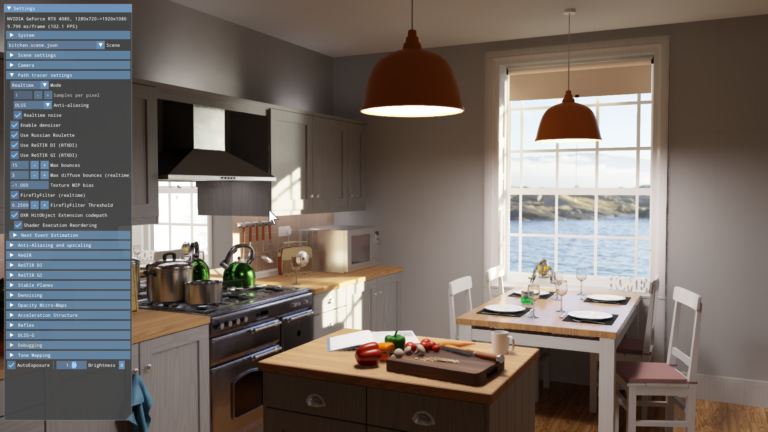
Realistic 3D simulation is becoming a cornerstone of modern AI and graphics, from training autonomous vehicles (AV) to powering robotics and digital twins. Neural rendering techniques like NeRFs and 3D Gaussian Splatting (3DGS) have revolutionized how 3D scenes are reconstructed and visualized from raw sensor data. In this post, we introduce the implementation of 3D Gaussian Unscented��
]]>
The release of NVIDIA OptiX 9.0 introduces a new feature called cooperative vectors that enables AI workflows as part of ray tracing kernels. The feature leverages NVIDIA RTX Tensor Cores for hardware-accelerated matrix operations and neural net computations during shading. This unlocks AI rendering techniques such as NVIDIA RTX Neural Shaders and NVIDIA RTX Neural Texture Compression (NTC) and��
]]>
NVIDIA today unveiled next-generation hardware for gamers, creators, and developers��the GeForce RTX 50 Series desktop and laptop GPUs. Alongside these GPUs, NVIDIA introduced NVIDIA RTX Kit, a suite of neural rendering technologies to ray trace games with AI, render scenes with immense geometry, and create game characters with lifelike visuals. RTX Kit enhances geometry, textures, materials��
]]>
Grab your copy of GPU Zen 3 to learn about the latest in real-time rendering. More info >��
]]>
As ray tracing becomes the predominant rendering technique in modern game engines, a single GPU RayGen shader can now perform most of the light simulation of a frame. To manage this level of complexity, it becomes necessary to observe a decomposition of shader performance at the HLSL or GLSL source-code level. As a result, shader profilers are now a must-have tool for optimizing ray tracing.
]]>